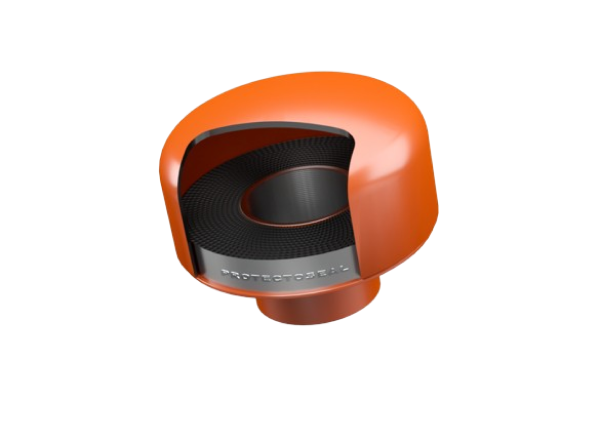Exploring Innovations in Flame Arresters
In industries where flammable gases and liquids are handled, ensuring safety is paramount. Flame arresters play a crucial role in preventing the propagation of flames and explosions in such environments. These devices are designed to extinguish flames and limit the passage of ignited gases, thereby safeguarding personnel, equipment, and the environment.
Over the years, advancements in technology have led to the development of innovative flame arresters, enhancing their effectiveness and reliability. Here we share some of the notable innovations in flame arresters and their contributions to industrial safety.
Understanding Flame Arresters
Before delving into the latest innovations, let’s first understand the basic principles of flame arresters. Flame arresters are passive devices installed in pipelines, vents, or storage tanks to prevent the transmission of flames from flammable gases or vapors.
They principally consist of metal or other materials with narrow passages through which the flammable mixture must pass. When ignited, the flame front encounters the device, and various mechanisms within the arrester extinguish the flame by disrupting the combustion process.
Innovations in Flame Arresters
Traditional flame arresters are typically constructed using materials such as metal alloys or ceramics. The team at Protectoseal is constantly reviewing the material composition to introduce new options with superior properties. For instance, our flame arresters can be designed and supplied to operate at elevated temperatures with enhanced temperature resistance and higher levels of durability in corrosive environments to ensure improved performance and longevity.
Investments in technologies have also allowed Protectoseal to undertake fluid dynamics modelling, which involves explosion simulations, so we can enhance the designs and optimize the flame arrester’s performance. By employing advanced mathematical models and algorithms, engineers can analyse fluid flow, heat transfer, and combustion dynamics within the arrester. This allows for the refinement of design parameters such as passage geometry, spacing, and surface characteristics to ensure enhanced flow characteristics, optimum flame suppression efficiency, and minimum pressure drop.
One such example is Protectoseal’s E-Flow® technology, which is used in most of Protectoseal’s End-of-Line and In-Line Flame Arresters. The technology was developed after years of research and collaboration with customers to offer ultimate protection while also allowing for improved gas and vapor flow rates during normal operation while mitigating pressure drops.
Building on this technology, our engineers patented RE-Flow® technology as a combination of our E-Flow® technology with a reverse flow configuration. This technology is utilised in our ERB Series of End-of-Line Flame Arresters and is designed to improve the performance of our Flame Arresters by optimizing the flow and pressure drop characteristics. It incorporates our enhanced crimped ribbon technology in the flame arresting element, and the matrix structure is optimized using computational fluid dynamics (CFD).
Our in-house team of engineers has also developed our new patented HEDS® (High Energy Dissipation System) technology. The technology is used in our range of In-Line Detonation Flame Arresters and offers ultimate protection from deflagration and both stable and unstable detonation explosions. The flame arresters combine Protectoseal’s patented HEDS® with our E-Flow® technology. This combination attenuates shock waves and extinguishes flames, effectively mitigating the effects of an explosion by preventing its propagation.
Flame Arrester Modelling
Using modelling, our engineers can tailor flame arresters for specific applications with precision, resulting in optimized performance and reduced maintenance requirements.
Modern flame arresters often integrate with the monitoring and control systems of pipeline or tank operators for real-time performance assessment and enhanced safety management. These systems utilize sensors to detect parameters such as temperature, pressure, and flow rate, providing continuous feedback on the operating conditions. In the event of an anomaly or malfunction, automated shutdown mechanisms can be activated to isolate the source of the flame and prevent the escalation to a potentially catastrophic scenario.
This information can also be used to remotely monitor process performance, which, in turn, can be used for maintenance scheduling and compliance tracking to ensure the reliability and regulatory compliance of flame arrester installations.
Our innovative products are designed and manufactured in the UK, USA, and India and have been independently flame and explosion type-tested. These tests are certified to EN ISO 16852 (previously BS EN 12874), the European Standard for flame arresters, which provides for a significant safety margin in typical operating conditions.
Mitigate the Risks of Fire and Explosion
As industrial processes become increasingly complex and hazardous, investing in the very latest and best flame arrester technology is essential to mitigate the risks of fire and explosion in order to safeguard personnel, physical assets, and, of course, the environment.
At Protectoseal, investment and innovation continue to drive our advancements in flame arresters, enhancing their performance, reliability, and adaptability to diverse industrial environments. Our experienced technical team works closely with our customers to design bespoke, cost-effective, and innovative solutions that reflect the best materials, computer modelling, and design to meet the safety challenges of modern industries.
Contact a member of the team to discuss your requirements and let us show you how our world-leading flame arresters provide the ultimate protection from explosions in high-risk environments.







